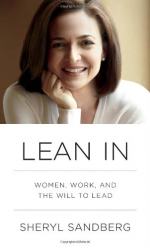
|
| Name: _________________________ | Period: ___________________ |
This quiz consists of 5 multiple choice and 5 short answer questions through Chapter 9.
Multiple Choice Questions
1. Who joked that, “a man has to be Joe McCarthy in order to be called ruthless. All a woman needs to do is put you on hold,” according to the author in Chapter 3: “Success and Likeability”?
(a) Leymah Gbowee.
(b) Dr. Peggy McIntosh.
(c) Marlo Thomas.
(d) Rosalind Einhorn.
2. Who is described in Chapter 5: “Are You My Mentor?” as the founder of CollegeSpring, “a nonprofit that provides SAT tutoring and college counseling to low-income students”?
(a) Omid Kordestani.
(b) Garrett Neiman.
(c) Marlo Thomas.
(d) Clara Shih.
3. In Chapter 8: “Make Your Partner a Real Partner,” the author cites a 2009 study which found that what percentage of people “in dual-earner marriages said that they shared housework, child care, and breadwinning evenly”?
(a) 22%.
(b) 16%.
(c) 45%.
(d) 9%.
4. What was the author voted as by her senior class, according to the narrative in Chapter 3: “Success and Likeability”?
(a) “Most likely to be a politician.”
(b) “Most likely to succeed.”
(c) “Most likely to become famous.”
(d) “Most likely to end up in jail.”
5. According to the author in Chapter 1: “The Leadership Ambition Gap,” females make up what percentage of people earning undergraduate degrees today?
(a) 24%.
(b) 57%.
(c) 66%.
(d) 18%.
Short Answer Questions
1. Whom does the author say “caught my attention at Facebook years ago when we were getting ready for our first senior-level meeting with the Walt Disney Company” in Chapter 5: “Are You My Mentor?”
2. What economist at the first job the author took convinced her that attending business school would be a better alternative than going to law school?
3. In a 2007 study of well-educated professional women who had left the paid workforce, what percentage cited their husbands as a critical factor in their decision, according to the author in Chapter 8: “Make Your Partner a Real Partner”?
4. The author asserts in Chapter 3: “Success and Likeability” that what “is key to achieving more success”?
5. Who is the professor of economics at Cornell that the author cites in Chapter 9: “The Myth of Doing It All” as saying, “The antiquated rhetoric of ‘having it all’ disregards the basis of every economic relationship: the idea of trade-offs”?
|
This section contains 364 words (approx. 2 pages at 300 words per page) |

|




